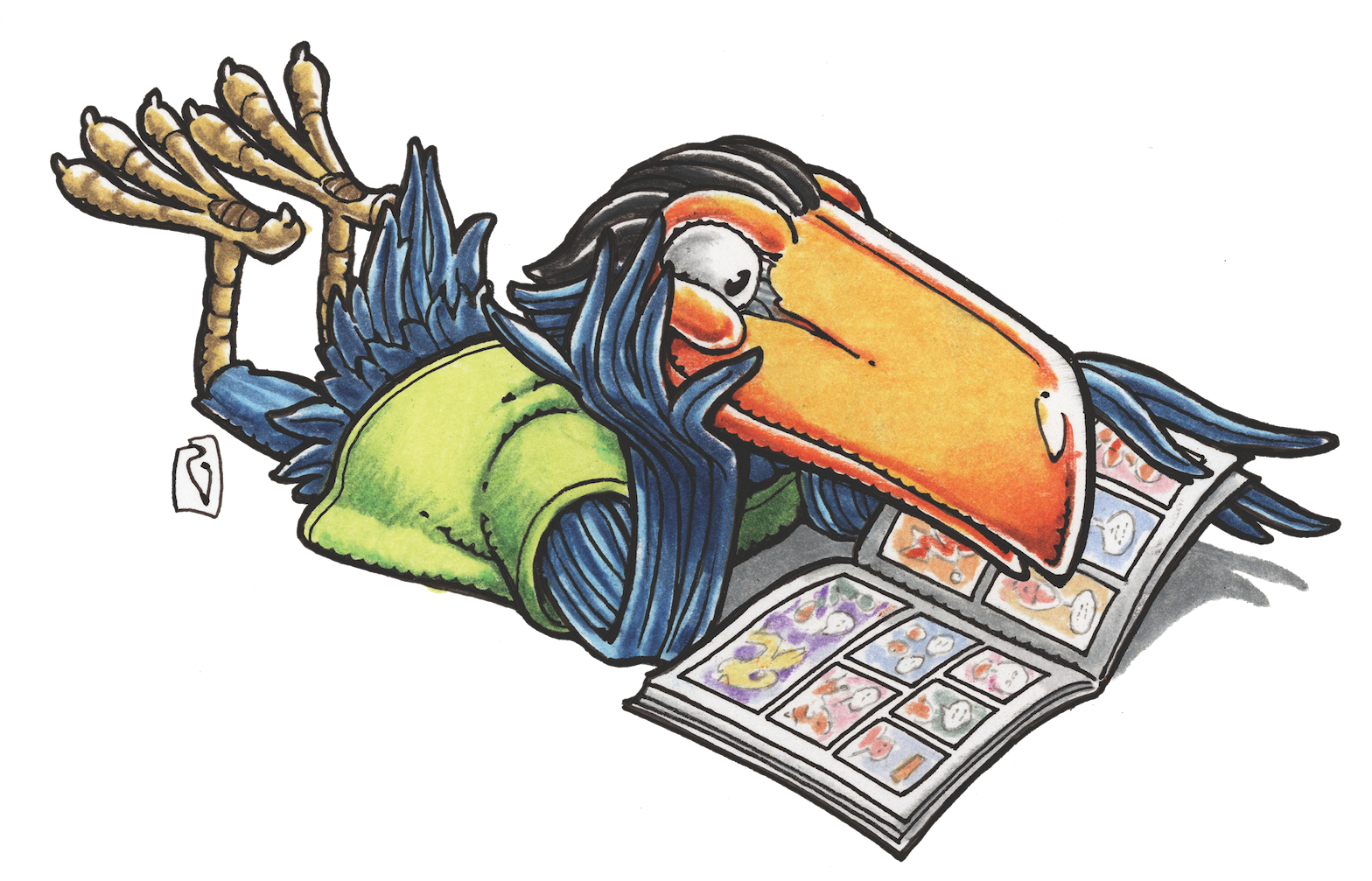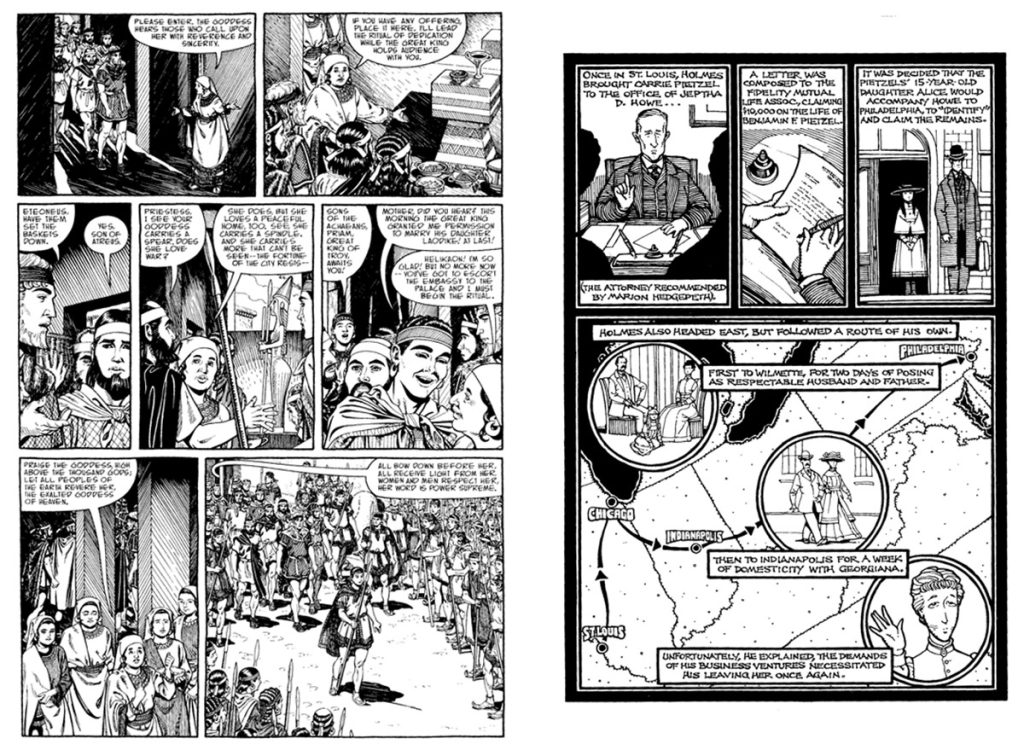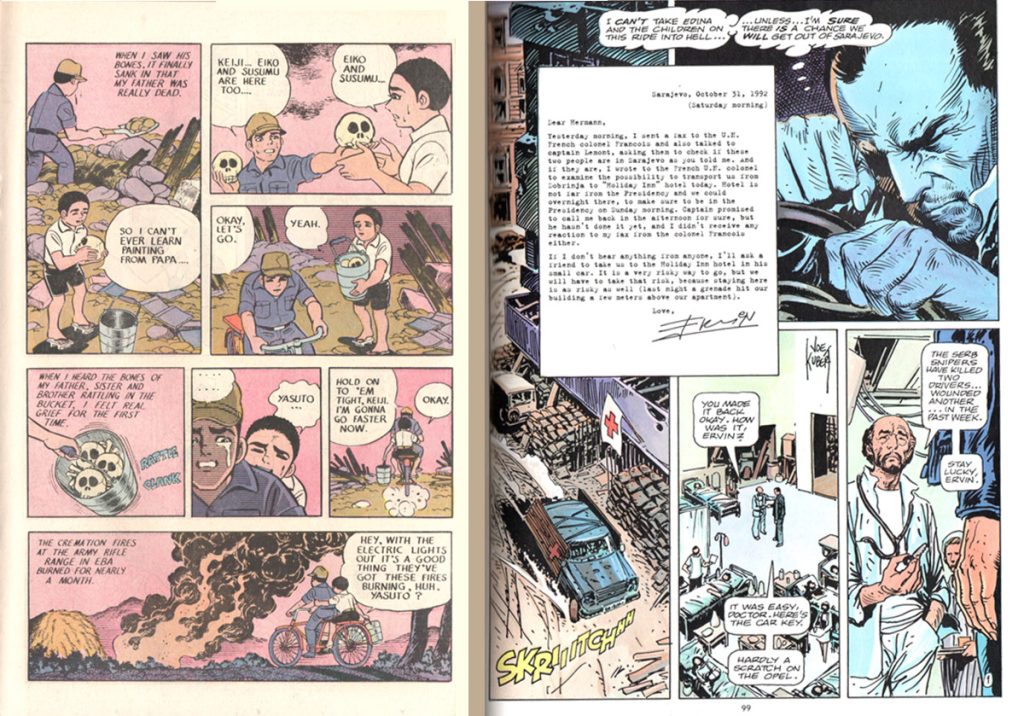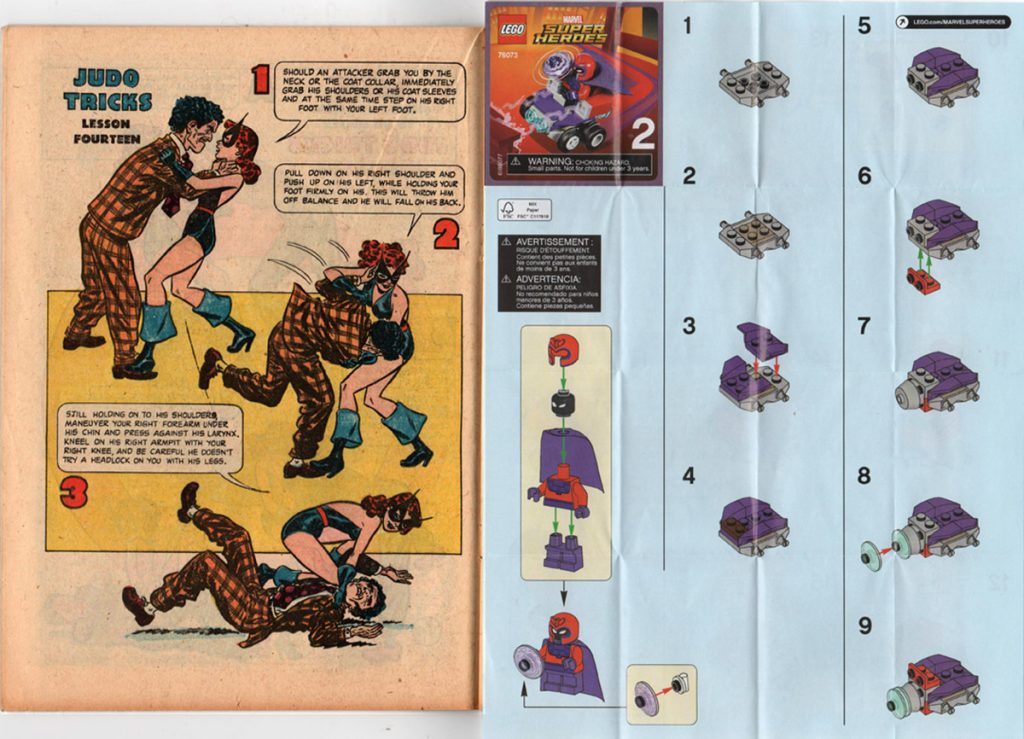MAGGIE’S WORLD BY MAGGIE THOMPSON
Maggie’s World 051: Here’s How!

A picture is worth 1,000 words? That saying became traditional in the early 20th century, and the combination of many pictures and words … Well, the worth is multiplied.
And, when it comes to conveying information, clarifying a mood, or adding details to a description, comics have been doing it for a long time.

Viewing History
Comics about historic events offer a boon to the reader, even though they must be a challenge for the writer and artist. Is that a hairstyle anyone would have worn in the Middle Ages? What were the vehicles of ancient Japan like? What shoes did they wear in India in the early 1700s? What did the city streets of Washington, D.C., look like after the Civil War? How did Greek archers hold the bow and arrow? Did it differ from the way Native Americans used the same tools?\
Robert L. Ripley’s Believe It or Not focused briefly on that sort of question. But what about more extensive explorations of what came before today?
One way to look at historical events is to view them through the lens of editorial cartoons. Thomas Nast brought us the donkey and elephant as party symbols in 1874, and a collection of his cartoons provides perspectives on an era many of us have never closely explored. The 20th Century in Cartoons: A History in Pictures, edited by Tony Husband and released in 2014 annotates the century decade by decade.
Political activist Eduardo del Río, under the name Rius, produced Los Supermachos in Mexico in the mid-1960s and went on to develop such releases as Cuba Para Principiantes: humorous informational comics designed to convey historical and sociological background of his topics.
Larry Gonick’s Cartoon History of the Universe, starting in 1978, had much of the feel of Rius’ work, and the collected volume became a bestseller.
In 1995, writer-artist Rick Geary launched the A Treasury of Victorian Murder series in which his stylized comics approach took readers through the details of famous—well, infamous, then—murders of that era. Starting with Jack the Ripper, he focused on such cases as those involving Lizzie Borden, Mary Rogers, and H.H. Holmes and eventually expanded his focus to later cases and other famous people, in his A Treasury of XXth Century Murder series.
In 2004, Archaeology magazine interviewed writer-artist Eric Shanower about his painstakingly researched (and award-winning) Age of Bronze series, begun in 1998. His focus was on the Trojan War, and Shanower said, “I was fascinated with the challenge of reconciling all the different versions and coming up with one long, coherent story line.”
The Shanower interview pointed up the work involved in going beyond text to provide what amounted to the full picture—from costumes to armaments to hairstyles to tools. He had a friend take photos of the area from angles that aren’t often pictured. To draw the palace at Mycenae, he built a model—and to provide the backgrounds of the walls, he looked at frescos from Pylos. When he wanted to draw musical instruments of the time, he wanted to go beyond the lyre, so he included instruments from ancient Egypt. “I hope that was sort of correct.”
It Can Be Personal
Taking readers into memoirs via comic art can make them more powerful.
In the 1980s, Marvel released writer-artist Sam Glanzman’s account of life aboard a Navy destroyer during World War II, and Dover provided an expansion of that memoir in A Sailor’s Story in 2015. Glanzman combined such technical details as maps, monthly logs, and ship layouts with anecdotes of life at sea, re-creating his experiences with memorable vividness.

Chillingly, another viewpoint of World War II came from Keiji Nakazawa in Ore wa Mita in which he brought the horrors of the effects of use of the atomic bomb to the next generation of readers. Initially a magazine feature in Japan, it came to America translated by Educomics in 1982 as I Saw It: The Atomic Bombing of Hiroshima.
When Joe Kubert began working with Ervin Rustematić, he didn’t expect that the head of Strip Art Features would suffer from what would happen during the Bosnian war in the early 1990s. But the challenges of living in a war zone were brought home in Kubert’s picturing of those events in Fax from Sarajevo, colored by SAF—and containing accompanying photos and text.
In her 2013 book collection of Hyperbole and a Half, Allie Brosh conveyed, as the cover says, “Unfortunate Situations, Flawed Coping Mechanisms, Mayhem, and Other Things That Happened.” Though her imagery bordered on the abstract, it made her messages clear.
But a memoir doesn’t demand a solo artist-writer. Sometimes, a team can work elegantly. Harvey Pekar was a writer, not an artist—but his American Splendor series (self-published “from off the streets of Cleveland” when it began in 1976) made brilliant use of a variety of collaborative illustrators. Later, his award-winning Our Cancer Year with Joyce Brabner and Frank Stack in 1994 took readers into the personal challenges following a cancer diagnosis.

How To
When kids in the 1950s pulled the bricks of Nabisco’s Shredded Wheat out of the box, they also found illustrated cardboard rectangles separating the layers of biscuits. On those were illustrations by Fred Meagher of “Straight Arrow Injun-uities” by Gardner Fox, who was also writing the comics series based on the radio show. Cards included “Swimming, Do’s and Don’ts,” how to use a bow and drill with a fire board, how to make an “Indian Kiln,” how to put together a “Blanket Roll and Pack,” and so on.
Will Eisner collectors, of course, know that one of the geniuses of the field put together P.S. Magazine, the “Preventive Maintenance Monthly,” for the Army beginning in the 1950s. “Distribute trailer loads equally between rear and fifth wheel. This transfers the load to the trailer.” He produced ongoing, memorable, clear, instructional comic art.
And, of course, the field of “how to make comics” itself is rife with texts, many in comic-art form. Henry artist Carl Anderson advertised a “Cartoon & Comic Strip Course” in 1930 and produced How to Draw Cartoons Successfully in 1935. Scott McCloud’s award-winning 1993 Understanding Comics: The Invisible Art has become a classic reference work. And, of course, his 2006 Making Comics has joined it as a fundamental text.
Online, Matthew Inman’s The Oatmeal may attract viewers for his humor, but his instructional grammar posts have become available as posters—though some may be deemed too edgy for public-school placement. Nevertheless, such features as “How to Use a Semicolon” (“the most feared punctuation on Earth”) are clarified by his images. Who could forget Mr. Jenkins in the course of his spider-tossing demonstration of “who” and “whom”? And I’d never heard of the mantis shrimp before Inman called its terrors to readers’ attention.
Comics readers in the 1950s might find self-defense instructions, illustrated dictionaries of Tarzan’s jungle terms, Julius Schwartz’s “Flash Facts” or “Mysteries in Space.” These days, well, yes: We often still need sequential diagrams to put together complex constructions.
If a picture is worth 1,000 words, a comic book can be priceless.
Maggie’s World by Maggie Thompson appears the first Tuesday of every month here on Toucan!